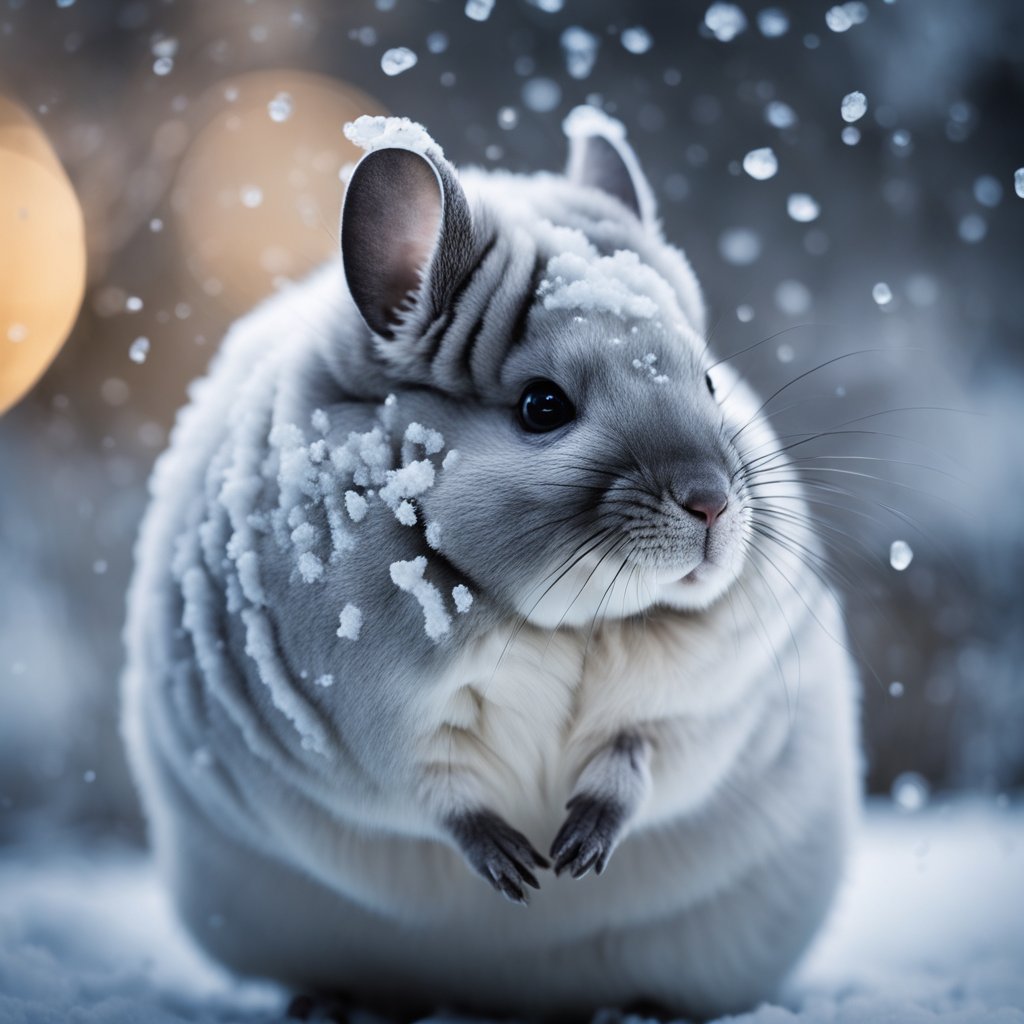Chinchillas are unique pets that require careful attention to their living conditions. You may wonder how cold is too cold for these delicate creatures. Temperatures below 50°F (10°C) can be harmful and even lead to hypothermia in chinchillas. It’s essential to maintain a proper environment to ensure they stay healthy and happy.

As a pet owner, it’s crucial to understand the signs of discomfort in your chinchilla and the ideal temperature range for their well-being. By keeping them in temperatures between 60°F and 74°F (16°C to 23°C), you can help prevent stress and health issues. Knowing how to protect your chinchilla from extreme cold will make a difference in your pet’s quality of life.
In this blog post, you’ll explore the right temperature range for chinchillas, the risks associated with colder environments, and answers to common questions about their care. This information will help you provide the best possible home for your furry friend.
Key Takeaways
- Chinchillas thrive in temperatures between 60°F and 74°F.
- Exposure to temperatures below 50°F can lead to serious health issues.
- Understanding your chinchilla’s needs is key to their happiness.
Understanding Chinchilla Temperature Needs

Chinchillas have specific temperature needs that are important for their health and comfort. Knowing these needs helps you create a safe environment for your pet.
Biology of Chinchillas
Chinchillas are native to the cool, mountainous regions of South America. In their natural habitat, they adapt to low temperatures. Their thick fur provides insulation, allowing them to thrive in colder climates. However, they are sensitive to extreme heat.
Because of their unique biology, chinchillas can be at risk when temperatures get too cold or too hot. Cold temperatures that dip below 25°F (-4°C) can lead to serious health issues. Your chinchilla may suffer from discomfort or illness if not kept in a suitable environment.
Ideal Temperature Range
The ideal temperature range for a chinchilla is between 60°F to 74°F (16°C to 23°C). Keeping your chinchilla within this range helps prevent overheating and stress.
If the temperature rises above 74°F (23°C), your chinchilla could face heatstroke. Make sure to monitor the humidity as well. Humidity levels should stay between 40% and 60% for optimal comfort.
If temperatures drop below the ideal range, you should provide extra warmth. Use soft bedding and blankets, but avoid heating pads that can generate too much heat. Always ensure your pet can find a cooler spot if needed.
Consequences of Low Temperatures

Low temperatures can have serious effects on chinchillas. It is important to understand the health risks, behavioral changes, and available resources to keep your pet safe.
Health Risks
Chinchillas are sensitive to cold weather. When exposed to temperatures below 50°F (10°C), they are at risk of developing hypothermia. Symptoms include lethargy, shivering, and difficulties breathing.
Prolonged exposure to cold can also weaken their immune system, making them more susceptible to illness. It is crucial to monitor your chinchilla’s body temperature and ensure they are kept in a warm environment during colder months.
If your chinchilla shows signs of sickness, contact a veterinarian promptly. Being aware of these health risks can help you keep your pet safe and comfortable.
Behavioral Changes
Cold temperatures can lead to notable behavioral changes in chinchillas. They may become more reclusive, seeking shelter in their bedding to stay warm.
You might also notice increased vocalization or agitation. These behaviors often indicate that your pet is stressed due to the cold environment.
A chinchilla’s overall activity level may decrease as they become less willing to explore or play. This can impact their mental and physical health. Observing these changes can help you take timely action to provide a more comfortable habitat.
Resources
To keep your chinchilla safe from cold weather, consider the following resources:
- Heating Pads: Safe, low-heat pads can be placed in their bedding area.
- Insulated Housing: Ensure their cage is in a warm room and consider adding insulation.
- Thermometers: Regularly check the temperature in their living space.
Additionally, monitoring humidity levels between 40% and 60% is also essential, as dry air can add to discomfort. Having the right resources on hand can greatly help in managing your chinchilla’s well-being during cold spells.
Frequently Asked Questions

Understanding the temperature needs of chinchillas is crucial for their health and comfort. Here are some common questions regarding how cold can affect these animals.
What is the ideal temperature range for keeping chinchillas comfortable?
Chinchillas are most comfortable in temperatures between 60 and 70 degrees Fahrenheit (15 to 21 degrees Celsius). Keeping the environment within this range helps prevent stress and health issues.
At what low temperature can chinchillas experience health issues?
Temperatures below 60 degrees Fahrenheit (15 degrees Celsius) can be stressful for chinchillas. Prolonged exposure to temperatures under this threshold may lead to serious health problems.
What are the signs of a chinchilla being too cold?
If your chinchilla is too cold, you may notice shivering, lethargy, or changes in behavior. They might also huddle together to conserve warmth or seek shelter in their bedding.
How can I keep my chinchilla warm during winter months?
To keep your chinchilla warm in winter, make sure their cage is placed away from drafts or cold windows. You can also add extra bedding or hay for insulation and consider heating pads designed for pets.
Are chinchillas at risk of hypothermia, and how can it be prevented?
Yes, chinchillas can be at risk of hypothermia if exposed to cold temperatures for too long. To prevent this, maintain a stable indoor temperature and keep an eye on your pet’s behavior for any signs of distress.
What measures can be taken to ensure a chinchilla’s cage maintains a safe temperature?
Ensure the cage is in a climate-controlled area of your home. Use thermometers to monitor the temperature and avoid placing the cage near air conditioning vents or heaters that may cause temperature fluctuations.
See also

